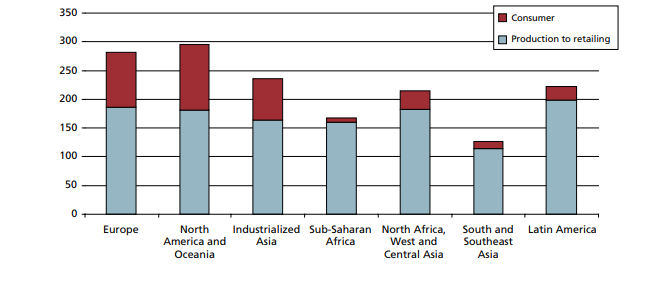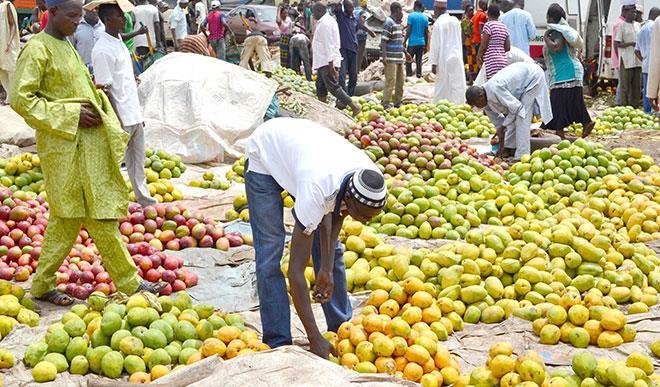For years, African companies have suffered from infrastructural challenges especially when it comes to minimizing food-chain losses. Now, companies are beginning to find ways to cut down losses via innovative routes, one of which is the current expansion of cold chain facilities across the continent.
Food wastage is not just a problem faced by developed countries, even countries across Africa face the same problem on a much larger scale. On average, 1 in every 4 persons in sub-Saharan Africa suffer from abject hunger and malnourishment. However, about a third of the produced food is wasted and 40% of the loses happen during the period between post-harvest and consumption. Based on research across the continent, food losses are usually associated with harvesting techniques, storage and cooling facilities.
A keen observation from the FAO
For a very long time now, the Food and Agricultural Organisation of the United Nations (FAO) has keenly observed that “the lack of reliable and adequate cold chain facilities in sub-Saharan Africa is one of the main causes of losses of perishable products, which are estimated to be about 25-30 percent for animal products and 40-50 percent for roots, tubers, fruits and vegetables.”
Per capita food losses and waste (kg/year)

Source: FAO
Cold Chain Solutions May Offer Some Hope
After harvest, farmers need an efficient way to store and preserve their products before they go to market; and cold chain solutions make this possible. Again the FAO has observed and identified a lot of pain points for cold-chain providers like; access to energy, shortage of qualified staff and spare parts, poor logistics, weak organisation and implementation of controls for compliance with standards, and relatively low traded volumes.
Notwithstanding, there are already a number of cold-chain providers in Africa that are surviving. One notable provider is Twiga Foods, which was founded in 2014 by Grant Brooke. What Twiga Foods does may sound fairly easy when explained, but the process is fairly complex in reality. Twiga Foods links farmers to vendors in order to expand their market and reach, and in addition, it provides cold-chain solutions for its network of farmers. Using various tech advances, it’s facilities use 70% less energy that traditional refrigeration systems and have up to two days of thermal backup capacity in the case of a power outage.
Twiga Foods is just one example of companies looking to change the look of post-harvest processing for farmers. Move to Rwanda and something cool is also happening there. So far, the government of Rwanda have been able to install 10 InspiraFarms solar-powered cooling units in rural areas that have no electricity or refrigeration. and the units are expected to serve about 100,000 smallholder farmers in the country.
In Africa’s largest economy, Nigeria, efforts to use cold chain solutions to solve post-harvest losses are also in place. APM Terminals, an international container terminal operating company, organised a trial shipment of 18 tonnes of fresh tomatoes from Kaduna to Lagos, a 621-mile trip. With this process they sought to figure out the strength of the Nigerian retail network, but they quickly found that it is in fact poorly established.
Other companies working the cold-chain solutions space in Nigeria include ColdHubs and Gricd Frij and you can read more about what they do on their websites to see how they are tackling this problem uniquely.
Other alternatives to cold chain solutions exist.
Cold-chain solutions are not the only solutions for post-harvest problems. In simple terms, food losses happen from the fact that things like fruits, for instance, don’t last long on shelves. So if there is a way to prolong the life of food products, then post-harvest losses can be reduced. This is what Coating+ hopes to achieve with its biotech research.
Coating+ is a company founded by a group of biochemistry students at the University of Ilorin, Nigeria. What they have done is create a transparent gelatinous coating that is sprayed onto fresh fruits and vegetables to prolong their shelf life. They achieved this through a combination of chitosan, sugar extracted from shrimp shells, soy proteins and some micro-nutrients. Coating+ is currently pursuing regulatory approval in order to boost its production capabilities, and that is looking very possible with its recent $10,000 prize money.
Yield Wise is another initiative by the Rockefeller Foundation that was launched in 2016. It is a $130 million initiative that is focusing on specific food chains on the African continent like; mangoes in Kenya, cassava and tomatoes in Nigeria, and maize in Tanzania. With its fund money, the initiative looks to invest in new technologies that bolster post-harvest processing, some of which include solar-drying technologies, mobile processing, as well as cold chain solutions.
In conclusion, it is fair to say that post-harvest processing is quite an active space for investors and budding entrepreneurs, especially on the African continent. At the moment, a lot has been done in this area, but there is more still left to be desired. With time maybe this could be a problem of the past.

